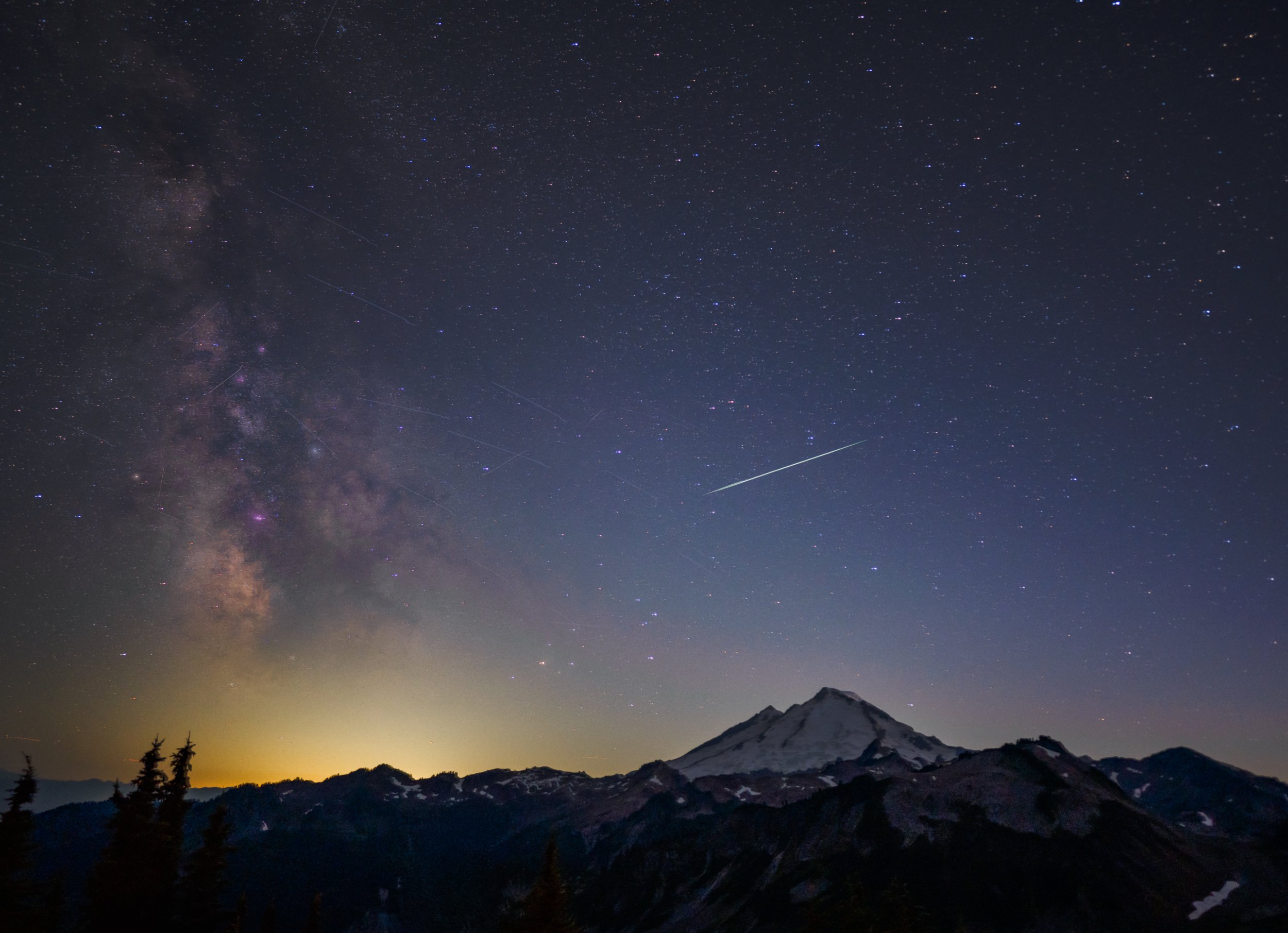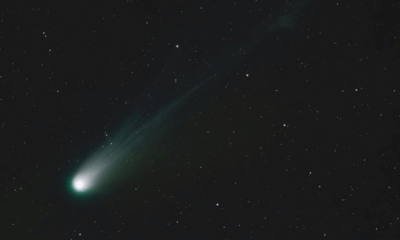Science
Discover Meteorites on Your Flat Roof: A New Urban Adventure

Flat roofs may be more than just a feature of urban architecture; they could also be treasure troves for meteorite enthusiasts. Recent insights suggest that tiny meteorites, often less than one millimetre wide, can be found on the rooftops of homes, particularly in cities where light pollution hinders the visibility of shooting stars. According to meteorite expert Joshua Howgego, who spoke at the public science festival New Scientist Live in London, these small space rocks are likely sitting above our heads, waiting to be discovered.
Meteorites are of significant scientific interest because they provide nearly pristine material from the early solar system, unlike terrestrial rocks that have undergone extensive geological changes over 4.5 billion years. The formation of planets from a disc of dust and gas around the young Sun left behind remnants that still orbit the solar system today. When these remnants, known as meteoroids, enter Earth’s atmosphere, they become meteors. Parts that survive the descent are classified as meteorites.
How to Hunt for Meteorites on Your Roof
Finding meteorites on your flat roof is becoming an increasingly popular hobby. To begin, gather basic supplies, including bags, a dustpan, and a brush. It is essential that individuals assess the safety of their roofs before proceeding, especially if children are involved.
Once on the roof, collect dirt, moss, and any debris, and then bring it down for cleaning. In a bucket of water mixed with liquid soap, wash the collected material thoroughly, discarding anything that floats. After several rinses, the remaining sediment will be left at the bottom of the bucket, which could contain microscopic meteorites. Spread the sediment on a plate to dry.
The next step involves using a strong magnet, such as those used for “magnet fishing.” Place it in a plastic freezer bag and pass it over the dried particles to identify any specks that stick to the magnet. The final challenge is identifying the meteorites. A microscope with a minimum of 50x magnification is ideal for examining the particles.
Meteorites have a distinct appearance; they tend to be spherical due to the melting that occurs as they pass through the atmosphere. This process gives them a unique texture, often different from the jagged stones native to Earth. While some magnetic materials may not be meteorites, guides, such as Jon Larsen’s book, On the Trail of Stardust, can help enthusiasts distinguish between earthly debris and cosmic finds.
The Scientific Value of Urban Meteorites
The pursuit of rooftop meteorites is not merely a pastime; it contributes valuable insights to the scientific community. A pivotal 2017 study published in the journal Geology documented the discovery of 500 micrometeorites by Jon Larsen, a Norwegian photographer collaborating with professional astronomers. This research provided evidence that urban micrometeorites could be found and studied, moving a step away from the traditional focus on remote locations like Antarctica and deserts.
Recent findings have revealed a variety of meteorite compositions. For instance, an amateur collector in Italy discovered an unusual alloy of aluminium and copper, indicating origins from a “protoplanet” that disintegrated during its formation. Dr. Matthew Genge, an astronomer at Imperial College London, highlighted the significance of such discoveries, which enhance our understanding of cosmic materials.
The rooftops of urban structures, including notable sites like Canterbury Cathedral, are now being explored for their potential to yield micrometeorites. Dr. Matthias van Ginneken, a cosmochemist at the University of Kent, is investigating the tops of various cathedrals, capitalizing on their larger surface areas to increase the likelihood of finding these cosmic treasures.
The potential for discovery is vast. Estimates suggest that thousands of tonnes of meteorites fall to Earth each year, with one tiny space rock landing for every square metre annually. This means many people are unknowingly sitting beneath ancient particles that predate our planet, offering a fascinating connection to the cosmos.
In conclusion, hunting for meteorites on flat roofs is an accessible and intriguing way to engage with science. It not only invites urban dwellers to explore their surroundings but also contributes to ongoing research in planetary science. As Dr. Genge aptly stated, “You are almost certainly sat under little pieces of dust from out of space that are older than planet Earth and are about the same age as the sun.” With this knowledge, the next time you look up at the sky, you might also consider the hidden treasures resting above you.
-

 Entertainment2 months ago
Entertainment2 months agoAnn Ming Reflects on ITV’s ‘I Fought the Law’ Drama
-

 Entertainment3 months ago
Entertainment3 months agoKate Garraway Sells £2 Million Home Amid Financial Struggles
-

 Health2 months ago
Health2 months agoKatie Price Faces New Health Concerns After Cancer Symptoms Resurface
-

 Entertainment2 months ago
Entertainment2 months agoCoronation Street’s Carl Webster Faces Trouble with New Affairs
-

 Entertainment2 months ago
Entertainment2 months agoWhere is Tinder Swindler Simon Leviev? Latest Updates Revealed
-

 Entertainment3 months ago
Entertainment3 months agoKim Cattrall Posts Cryptic Message After HBO’s Sequel Cancellation
-

 Entertainment2 months ago
Entertainment2 months agoOlivia Attwood Opens Up About Fallout with Former Best Friend
-

 Entertainment2 months ago
Entertainment2 months agoMasterChef Faces Turmoil as Tom Kerridge Withdraws from Hosting Role
-

 Entertainment3 months ago
Entertainment3 months agoMarkiplier Addresses AI Controversy During Livestream Response
-

 Entertainment4 months ago
Entertainment4 months agoSpeculation Surrounds Home and Away as Cast Departures Mount
-

 World2 months ago
World2 months agoCole Palmer’s Mysterious Message to Kobbie Mainoo Sparks Speculation
-

 Entertainment2 months ago
Entertainment2 months agoITV’s I Fought the Law: Unraveling the True Story Behind the Drama




















